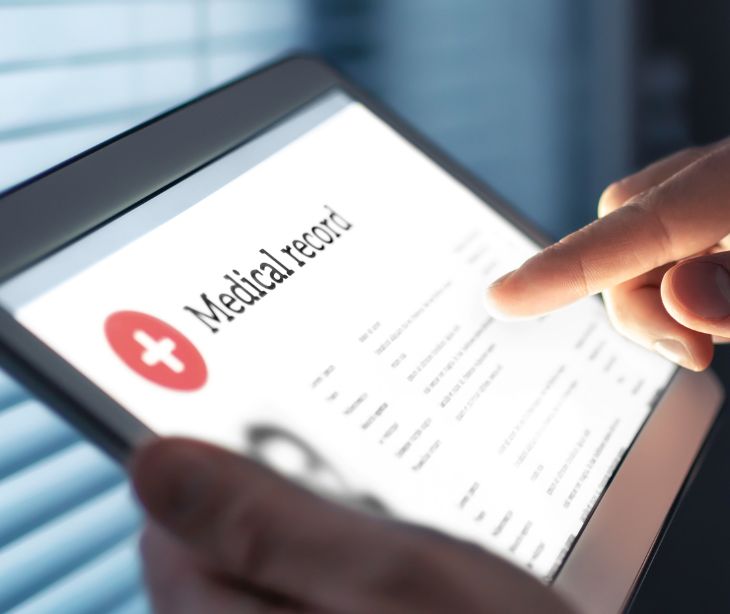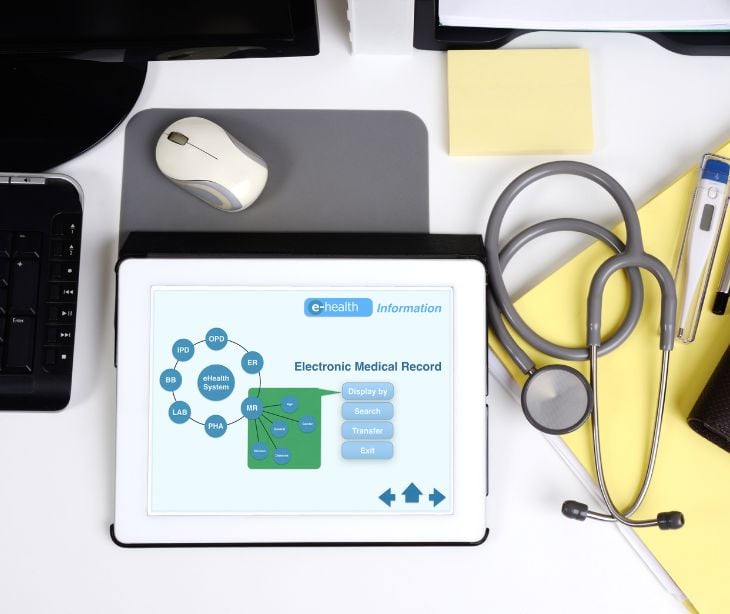
Like any innovation, EHR systems come with their own set of challenges. From financial considerations and interoperability challenges to security concerns and workflow disruptions, healthcare organizations must navigate these obstacles strategically.
What is an EHR system?
An electronic health record (EHR) system is a digital version of a patient's paper chart that contains their medical history, diagnoses, medications, treatment plans, immunization dates, allergies, radiology images, and laboratory test results.
Go deeper: What is an electronic health record (EHR)?
Disadvantages of an EHR system
- Financial strain and implementation costs: Transitioning from traditional paper-based systems to EHR solutions involves substantial financial investment. Healthcare organizations must navigate through initial costs covering software, hardware, staff training, and data migration.
- Learning curve and productivity dips: Implementing EHR systems requires healthcare professionals to adapt to new workflows and interfaces. This learning curve can temporarily decrease productivity as staff members become accustomed to the new system. Proper training is essential to effectively mitigate these challenges.
- Interoperability woes: Achieving seamless data exchange between EHR systems remains a persistent challenge. Incompatibility issues often hinder the efficient sharing of patient information between healthcare providers and organizations. This lack of interoperability can compromise the coordination of care and communication among medical professionals.
- Security and privacy concerns: With the digitization of health records comes the pressing issue of cybersecurity. EHR systems store sensitive patient data, making them attractive targets for cyber threats. Healthcare organizations must invest in robust security measures to prevent unauthorized access, data breaches, and protect patient privacy.
- Workflow disruptions and customization challenges: The transition to EHR systems may disrupt established workflows within healthcare organizations. Adjusting to new processes can be time-consuming, impacting efficiency. Customization challenges may also arise as organizations strive to align the system with their unique workflows, requiring additional time and resources.
Related:
- Why healthcare organizations should maintain both paper and digital records
- HIPAA Compliant Email: The Definitive Guide
Navigating the challenges
Navigating the obstacles associated with EHR systems requires a strategic approach from healthcare organizations:
Financial planning
- Budget allocation: Develop a comprehensive budget that includes the initial implementation costs and ongoing expenses such as maintenance, updates, and training.
- Explore funding options: Investigate potential funding sources, grants, or incentives government programs provide to support adopting EHR systems, especially for smaller healthcare practices with limited financial resources.
Training and change management
- Comprehensive training programs: Invest in thorough training programs for healthcare staff to ensure a smooth transition to the EHR system.
- Change management strategies: Implement effective change management strategies to manage resistance to change.
Interoperability planning
- Collaboration and standardization: Collaborate with other healthcare organizations and stakeholders to establish interoperability standards. Support initiatives that promote standardized data exchange, ensuring seamless communication between different EHR systems.
- Invest in interoperable solutions: When selecting or upgrading EHR systems, prioritize solutions that support interoperability. This facilitates smoother information exchange and improves care coordination across healthcare providers.
Security measures
- Robust cybersecurity protocols: Implement cybersecurity measures to protect patient data. This includes encryption, access controls, regular security audits, and staff training on security best practices. Stay updated on the latest security technologies to address evolving threats.
- Compliance with regulations: Ensure compliance with relevant healthcare privacy and security regulations, such as the Health Insurance Portability and Accountability Act (HIPAA).
Go deeper: What is cybersecurity in healthcare?
Workflow optimization
Customization and workflow analysis: Work closely with EHR vendors to customize the system to align with the unique workflows of the organization. Conduct thorough workflow analyses to identify bottlenecks and inefficiencies, making necessary adjustments for optimal integration of the EHR system.
Continuous improvement: Establish a culture of continuous improvement, encouraging feedback from healthcare professionals using the system. Regularly evaluate workflows, identify areas for enhancement, and implement changes to streamline processes.
Related:
- Cyber Attacks: In the Healthcare Sector
- Preventing the spread of cybersecurity attacks in healthcare
Subscribe to Paubox Weekly
Every Friday we'll bring you the most important news from Paubox. Our aim is to make you smarter, faster.




